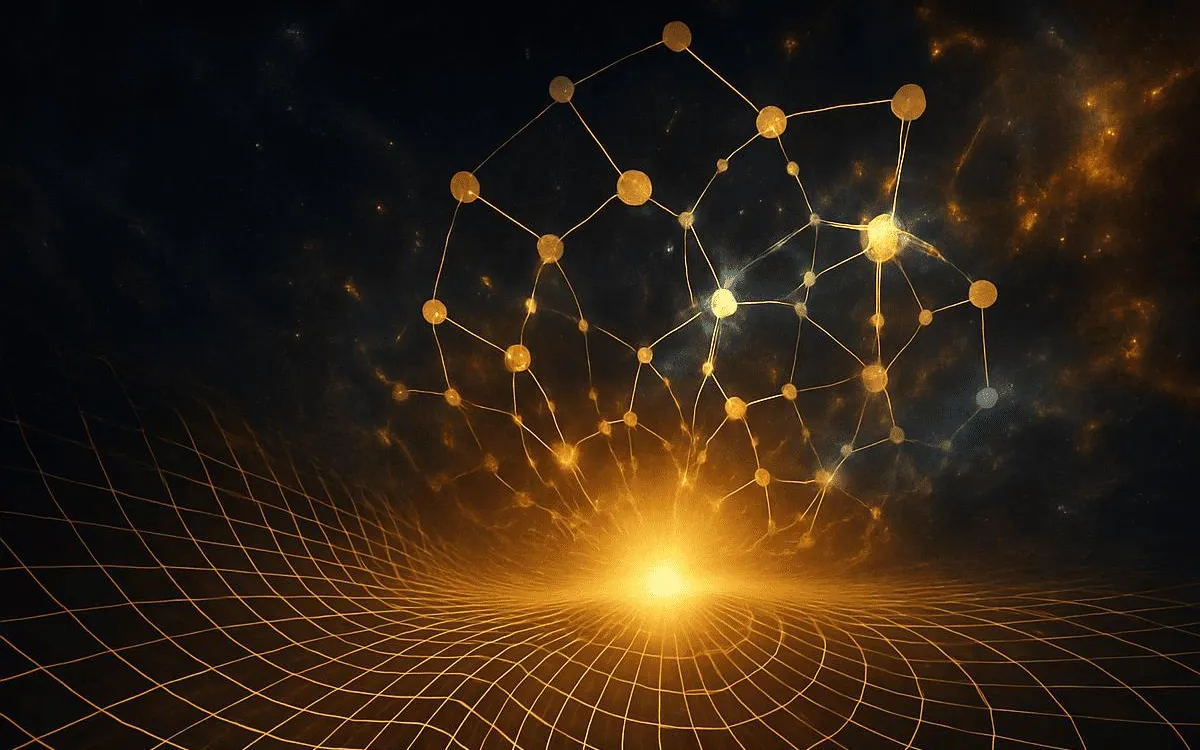
A groundbreaking study published in the Annals of Physics proposes that quantum information, encoded in entanglement entropy, has a direct influence on the curvature of spacetime. This innovative research suggests that gravity may emerge from the very fabric of quantum information itself, offering a fresh perspective on the unification of gravity and quantum mechanics.
The paper introduces a new framework that incorporates an “informational stress-energy tensor” into Einstein’s equations. This modification argues that gravity is not solely a response to mass and energy, but also to the complex structure of information within quantum fields. If validated, this theory could transform physicists' understanding of both gravity and quantum computing.
Florian Neukart from the Leiden Institute of Advanced Computer Science at Leiden University and Chief Product Officer of Terra Quantum spearheaded this research. The concept of an informational stress-energy tensor, derived from quantum entanglement entropy, plays a crucial role in this framework. Entanglement entropy quantifies the degree of correlation between different regions of space, bridging quantum theory and the geometric structure of spacetime.
In traditional general relativity, the curvature of spacetime is determined by the energy and momentum of matter and radiation. However, the new framework adds quantum information as a critical factor, modifying Einstein’s equations and explaining some of gravity's elusive behaviors. This includes potential corrections to Newton’s gravitational constant, suggesting a deeper relationship between quantum information and gravitational dynamics.
The study reinforces the idea that entanglement is not merely a computational resource; it might also be a fundamental component of the universe's structure. As quantum computing systems manipulate entanglement, they could be tapping into mechanisms that influence the shape of spacetime. This duality between geometry and information could have profound implications for ongoing efforts in quantum gravity, including holographic theories and the AdS/CFT correspondence.
To substantiate its claims, the study computes corrections to Newton’s constant utilizing entanglement entropy from various quantum fields, including scalars, spinors, and gauge bosons. Although these corrections are numerically small, they depend on the universe's quantum field content and vary with energy scale, suggesting that gravity's strength might not be constant.
Neukart employs established quantum field theory techniques, such as the replica trick and heat kernel methods, to model how entangled regions of space affect curvature. These methods enable physicists to analyze how quantum information spreads and interacts in curved spacetime, providing insights into gravitational dynamics, particularly near black holes and during the early universe.
One striking implication of this research pertains to black hole thermodynamics. Traditional equations for black hole entropy and temperature assume a fixed Newton’s constant. However, if gravity is scale-dependent as proposed, these thermodynamic quantities would also experience shifts. At higher energy scales, the entropy of a black hole might decrease, while its temperature could rise, potentially altering evaporation rates.
This theoretical exploration not only addresses the black hole information paradox but also suggests that the scale-dependence of gravity could influence other cosmic phenomena, such as inflation, nucleosynthesis, and dark energy. The rapid expansion of the early universe, which is governed by equations involving Newton’s constant, might have unfolded differently had the constant been slightly smaller at higher energies.
Despite its elegant framework, the study presents predictions that may be challenging to test. The anticipated variations in Newton’s constant are minuscule, far below the detection capabilities of current technology. Most corrections become significant only near the Planck scale, where gravitational and quantum effects converge. Additionally, results depend on perturbative techniques that may fail at extreme energy levels.
The authors acknowledge these limitations and advocate for the development of non-perturbative approaches, such as exact renormalization group methods, to enhance the theory’s applicability. Furthermore, the findings are based on the Standard Model, and theories beyond it could amplify the observed effects.
While the study does not claim to provide a definitive solution to quantum gravity, it reframes the problem significantly. By integrating entanglement entropy into Einstein’s equations, it opens a promising avenue that connects spacetime to information—concepts familiar to both quantum computer scientists and physicists.
Future research should explore a broader inquiry to follow up on this foundational work. The author suggests that emerging quantum experiments, including precise measurements of gravity at short distances and advancements in black hole imaging, may offer indirect support for this theory. Additionally, astrophysical data, gravitational wave signals, and high-energy observations could provide further insights as observational precision improves.
This proposal also invites quantum information researchers to view their work within a wider context, potentially contributing to one of the most significant unresolved questions in physics. As some researchers suggest, these efforts could hint at an “informational operating system” that underlies the cosmos, emphasizing that the structure of reality may emerge not solely from matter and energy but also from the flow and pattern of information itself.